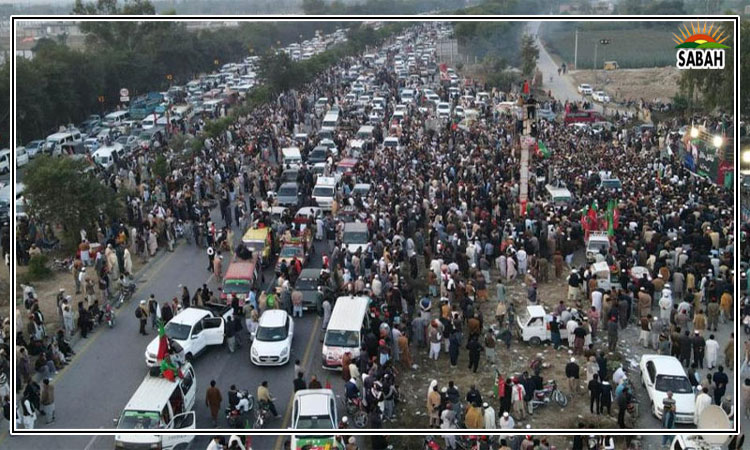CPEC 2.0…Dr Khalid Waleed
The China Pakistan Economic Corridor (CPEC), a cornerstone of Chinas ambitious Belt and Road Initiative (BRI), is undergoing a transformative evolution. Marking its progression into a second, more sophisticated phase, CPEC 2.0 aims to refine and expand upon the achievements of its predecessor.
CPEC 2.0 symbolizes a strategic pivot from a purely infrastructure-centric approach to a more nuanced, holistic development model. This model emphasizes the interplay of technology, culture, and community, setting a precedent for future international cooperation initiatives.
The inaugural phase of CPEC, often referred to as the hardware phase, marked a significant milestone in the bilateral relations of China and Pakistan. During this period, the corridor saw substantial Chinese investment flow into Pakistan, amounting to billions of dollars. This influx of funds primarily catalyzed large-scale energy projects, including the establishment of coal power plants, which played a pivotal role in addressing Pakistans acute energy crisis.
The hardware phases most notable accomplishment was the substantial reduction in energy shortages. Pakistan, which had been grappling with crippling power outages, experienced a remarkable turnaround, boosting energy supply.
However, this phase was not without its challenges. The rapid expansion in power capacity and long-term power purchasing agreements (PPAs) led to the financial instability of the energy sector this brings to light the critical need for integrated planning and the software approach of development. Financial strains became apparent as the country navigated the complexities of managing large-scale foreign investments. Sustainability concerns emerged, particularly regarding the environmental impact of coal-powered energy projects.
These experiences underscored the importance of a more comprehensive approach to development, one that not only focuses on physical infrastructure but also considers economic, environmental, and social sustainability.
Transitioning from the infrastructure-heavy focus, CPEC 2.0 introduces a paradigm shift towards a software of development approach. This phase is characterized by a strategic emphasis on fostering deeper, more meaningful connections between people, cultures, and communities. It signifies a move towards integrating human and cultural dimensions into the development process, thereby enriching the Sino-Pakistani collaboration with a more nuanced and holistic approach.
CPEC 2.0 prioritizes building strong China-Pakistan relations through cultural exchanges, educational initiatives and community involvement, shifting from infrastructure to people-centric development for improved living standards and job creation in Pakistan. It integrates Chinese manufacturing in Pakistans Special Economic Zones (SEZs) to enhance local competitiveness through technology and skill transfer.
Emphasizing digital transformation, CPEC 2.0 focuses on developing digital infrastructure and smart cities, promoting Pakistans digital economy and governance. The phase also addresses sustainability, emphasizing green development with renewable energy and sustainable urban planning. Additionally, it fosters knowledge exchange and collaboration in science, technology, and education, building a foundation for shared innovation and advancement.
By integrating these software elements of development, CPEC 2.0 aims to create a more sustainable, inclusive, equitable and forward-looking growth trajectory for Pakistan. This approach not only addresses the limitations of the initial phase but also sets a new standard for international development projects.
To bridge these two phases effectively, a rational policy roadmap is essential. This roadmap must focus on integrating the industry-energy nexus through CPEC, using a series of reforms and initiatives.
First, there is a need for an actionable plan to encourage Chinese investors in coal power plants to shift their investments towards renewable energy sectors through incentivization of repurposing and conversion of coal plant infrastructure to renewable energy alternatives. This can be achieved by tweaking Chinas Green Investment and Finance Partnership (GIFP) initiative to suit the unique context of Pakistan to transform stranded Chinese investments into more functional and financially sustainable investments.
Another critical step is the involvement of Chinese investors in Pakistans power transmission sector. This will ensure better integration of renewable energy into the national grid, enhancing energy security and sustainability. Learning from Chinas experience in the power sector, Pakistan can integrate its industrial manufacturing with the national grid, increasing the industrial share in energy consumption and reducing inefficiencies.
The concept of distributed generation is also crucial, especially in areas not well-served by the national grid. Renewable energy plants, particularly in the mining sector and SEZs, can ensure long-term, low-emission industrial development. Bringing Chinese expertise in wind and solar power equipment manufacturing to Pakistans SEZs can initiate a green energy revolution in the country.
Energy efficiency is another area where Pakistan can greatly benefit from Chinese expertise. Implementing best practices from China across various sectors in Pakistan will contribute significantly to reducing energy waste and enhancing overall efficiency.
Another possible arena for Pakistan under CPEC 2.0 is to invite Chinese electric vehicle (EV) manufacturers to its SEZs, aiming to reduce its heavy trade deficit caused by the transportation sector. This move towards electric vehicles could save Pakistan up to 30 per cent in transportation fuel costs, equating to a substantial $300 million monthly or $3.6 billion annually. These savings surpass the value of the IMFs standby arrangement programme, highlighting the significant economic and environmental benefits of this initiative.
Lastly, as indicated by economist Robert Solows labour-augmenting technological processes, the second phase of CPEC should focus on building the capacity of Pakistans labour force. This includes both productive and research labour, fostering a generation of industrial scientists, engineers and researchers. This approach aligns with the broader objective of sustainable industrial development.
CPEC 2.0 marks a strategic evolution from the infrastructure-intensive hardware phase to a holistic software of development approach, integrating technology, culture, and community to foster sustainable, self-reliant industrialization in Pakistan.
The success of this refined strategy hinges on a rational policy roadmap, focusing on industry-energy nexus integration, renewable energy transition, and capacity building to ensure a sustainable, inclusive growth trajectory for Pakistan.
Courtesy The News












